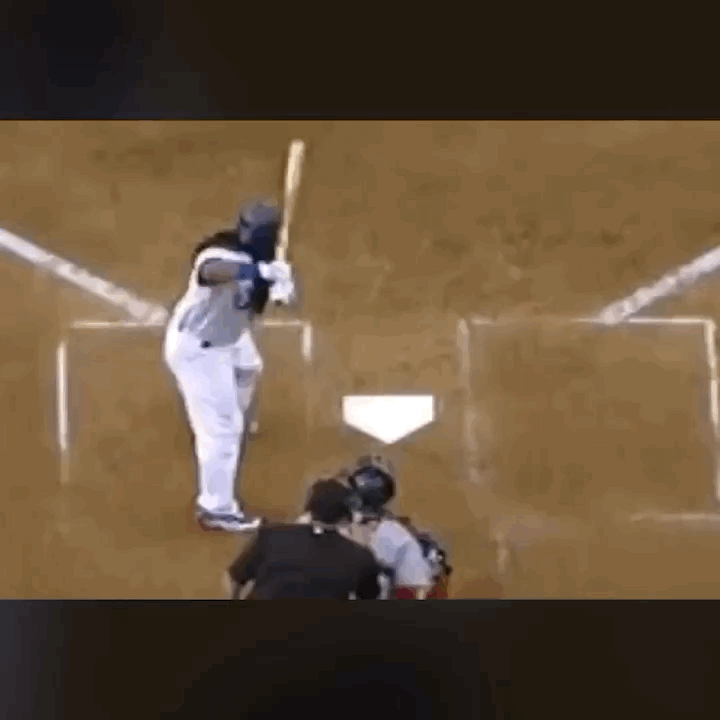Swing "Direction" and Its Implications
What is “Direction” within a swing?
When talking about the baseball or softball swing, there are a few things that we find vital to focus on in order to ensure consistency and success when it relates to the way the bat itself moves. Those are as follows:
Bat/Barrel Path - How the barrel moves “vertically” through the swing (should be a slightly upward path)
Barrel Depth - How early a hitter gets his/her barrel into the hitting zone
Bat/Barrel Direction - The physical direction in which a hitter delivers the barrel through the hitting zone
Of these three, barrel direction itself is often the least talked about or focused on during hitting instruction or work. With that being said, it could also be the most vital to a hitter seeing sustained success at a high level.
Why Direction Matters
We like to focus heavily on barrel direction with our hitters, especially those who have begun to play at a higher level. When delivering the barrel into the hitting zone, there are usually two ways we see the bat delivered.
“Out and Around” - this is a term often used for hitters who deliver their barrel initially to the pull or hook side, creating a swing that often disconnects early and causes them to get “around” the baseball or softball. Many times coaches will relate this to “pulling the front shoulder” or leaking open. This type of direction can cause various issues, such as top/hook spin to the pull side, weak contact to the opposite field, inability to drive the ball with power - especially to opposite field gap.
“Behind and Through” - what we feel is the better of the two options, this focuses on delivering the barrel behind the ball deep and staying “through” it as long as possible. We feel that this gives hitters a much better opportunity to drive the pitches away from them into the opposite field gap.
Trinity Getting “Out and Around” the pitch away
Trinity Getting Behind/Staying Through pitch away
Manny Ramirez Turning the Barrel from Behind
From the two videos of Trinity above, many cannot tell the difference between the two swings - but they will yield incredibly different results. Good direction (Behind and Through) will often yield a much more well rounded hitter.
Creating Space and Maintaining Direction
This is where the concept and application becomes a little more difficult. Many hitting coaches have very different ideas on how to get the body in the correct spot to allow for proper spacing. “Creating space” is the idea that the barrel can be turned behind the baseball, especially on the inside pitch without the hitter getting “out and around” it.
In my opinion, where the pelvis sits in the stance up until the “launch” of the swing is vital to creating direction. When a hitter loads and stays in their glute/ back hip, this keeps their pelvis seated over their heels allowing for space to be created to deliver the barrel to the inside pitch from behind the baseball or softball. If they get on to the ball of their back foot or push out of their quadriceps, they will often block entry of their barrel with their pelvis. This will then force the athlete to swing “around” their pelvis, causing that “out and around” direction that we are trying to avoid. (See Below)
Space Created for Barrel Delivery - Credit: @hittingforpower on Twitter
No Space Created for Barrel Delivery - Credit: @hittingforpower
Many people will see this and ask things like “what about squishing the bug?” or getting the backside through? The more video’s I study of the best hitters in the world, the hips do not truly rotate in the traditional sense of the word but also drive forward against a firm front side. This is why you often see hitters who make contact with their back foot off the ground. Mike Trout and JD Martinez are both great examples of their rear heel staying planted until launch, allowing for the creation of space to deliver the barrel (especially to inside pitches).
Trout creating space for inside pitch
Once this space has been created and the barrel can be delivered efficiently, the next step is maintaining that direction and staying “through” the baseball or softball. In this process, we often talk about maintaining our posture or “keeping our line”. In short, what that means is that we want to keep our barrel on the line of delivery for as long as possible, preventing “pulling off” which we know creates a variety of issues as stated previously.
Now, keeping this line is incredibly difficult, and also leads to a byproduct currently being debating within the hitting community. Yes, I am talking about the “Scissor kick”. For those who don’t know, the scissor kick is the action of the back foot being kicked out backwards during the swing. This can be seen in a variety of hitters including Mike Trout, Jose Altuve, Miguel Cabrera and others. With that being said, I still believe it is a byproduct of the swing itself and keeping the direction, forcing the back foot to kick out in that manner (See Below). This is often seen on inside pitches. We must also acknowledge that all hitters have different mobility and movement characteristics, some may scissor kick more than others.
Scissor Kick can be seen here at contact
Placing Emphasis on Direction
As the baseball world continues to learn more about the swing and how each specific athlete moves and operates, we have begun to focus heavily on things such as launch angle, attack angle and exit velocity. While all of these are still INCREDIBLY important, without quality direction a hitter will always struggle to be a complete hitter and drive the ball to all parts of the ballpark.







